Search The Collection
Filter By
Object Type / Material
Geographic Location
Date / Era
Department
Show Only:
- As part of the Met's Open Access policy, you can freely copy, modify and distribute this image, even for commercial purposes.APIPublic domain data for this object can also be accessed using the Met's Open Access API
- Objects with changed or unknown ownership in continental Europe between 1933-1945. Learn more
Showing 144 results for chasuble with orfey
Sort by:
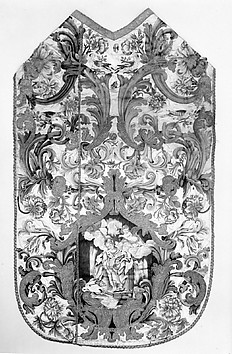
Italian
late 17th century (textile); 18th century (current appearance)
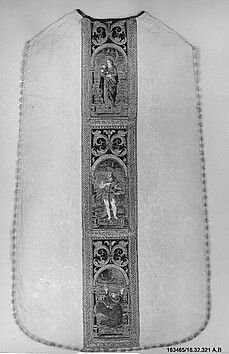
Italian or Spanish
16th century (needlework), 17th century (damask support)

Portuguese
ca. 1720 (figurative woven silk), ca. 1775 (embroidered orphrey), cut patched and reassembled ca. 1775
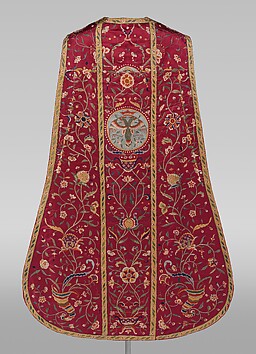
China, for European, possibly Spanish, market
late 18th century or early 19th century
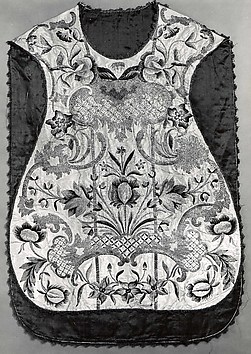
Italian
18th century
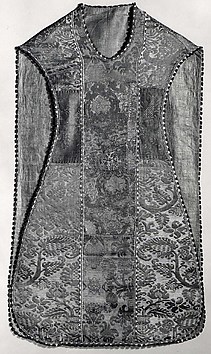
Spanish
late 16th or early 17th century
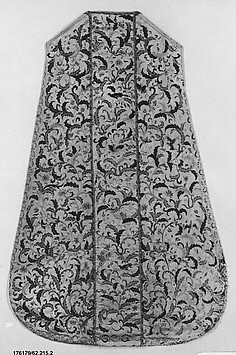
Chinese, for European market
Early 18th century
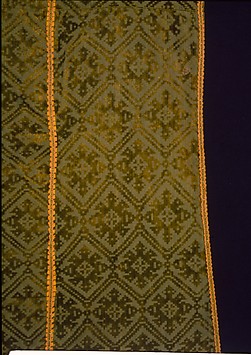
Italian
late 16th or early 17th century
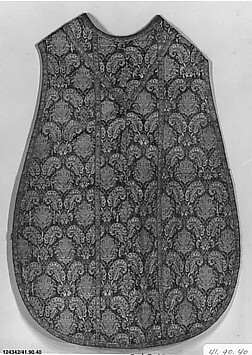
Possibly Spanish
ca. 1700, cut and reassembled in current form ca. 1825
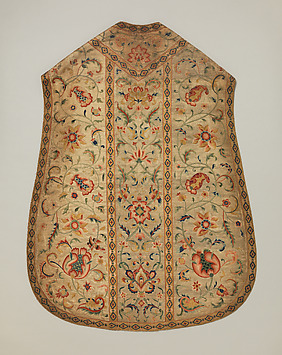
Chinese, for European market
Mid-19th century
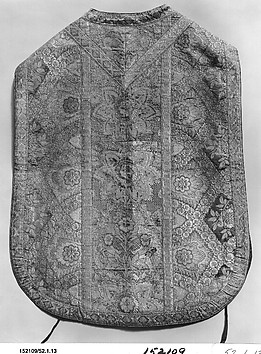
Italian
1720–30 (silk), cut, patched and tailored to current shape in the 19th century
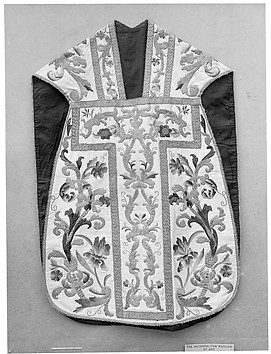
Italian
19th century
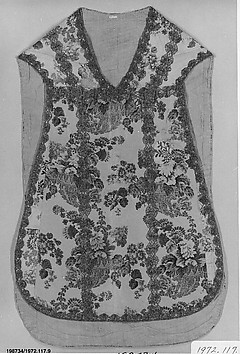
French
first half 18th century
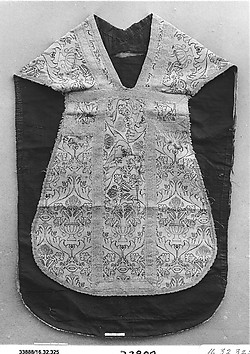
Italian, possibly
19th century
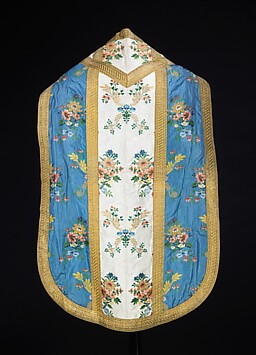
French
mid-19th century

Italian
18th century
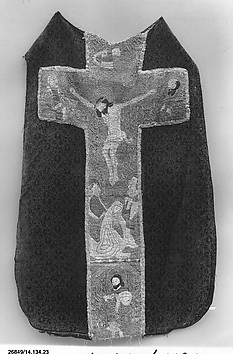
Probably German
ca. 1600

Italian
17th–18th century
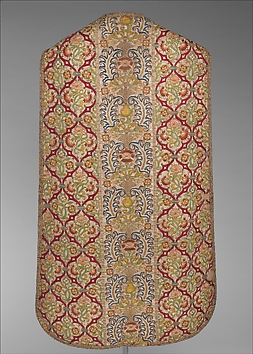
possibly Spanish
Mid-19th century
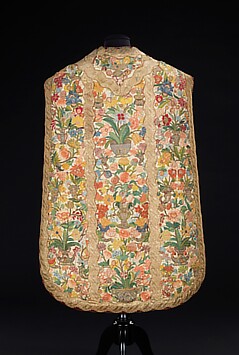
probably Portuguese
mid-19th century

Italian
Late 19th century
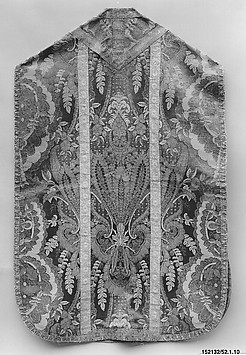
Italian
1725–30 textile, cut and reshaped in the nineteenth century
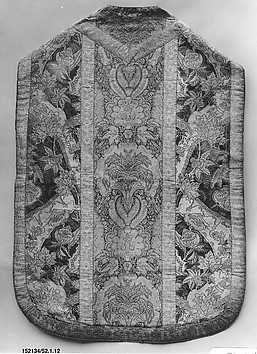
Italian
1720–30 (silk), cut and tailored to current shape in the 19th century
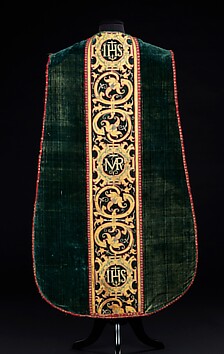
Italian
Late 16th Century; cut, patched and reshaped at a later date
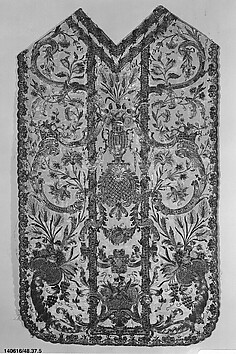
Italian
mid-19th century

Italian
ca. 1775, cut and reassembled ca. 1875
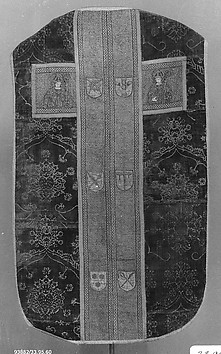
Italian and Netherlandish
ca. 1550 (velvets), ca. 1500 (embroidery), cut, combined, patched and reshaped ca. 1890
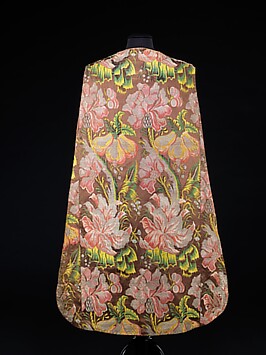
European
ca. 1850, cut, patched and reassembled ca. 1900.

possibly Austrian
ca. 1650 (embroideries), 1800 (velvet), cut, patched and reassembled at a later date
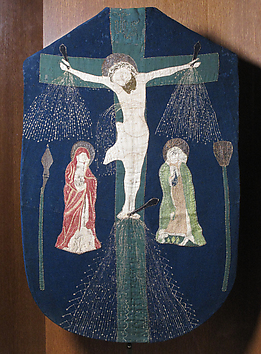
German
15th century
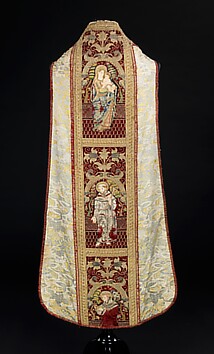
Spanish and British or Chinese made for export
17th Century (embroidery), 18th Century (silk), cut, reassembled and reshaped at a later date
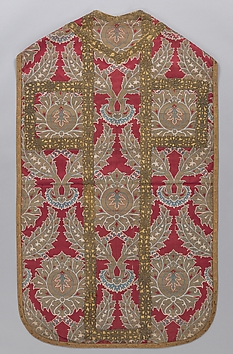
17th century

Italian
ca. 1650
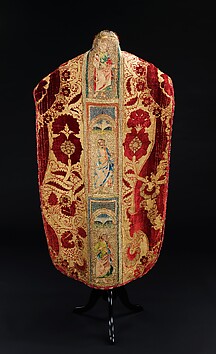
Spanish
ca. 1550, cut, patched and reassembled at a later date
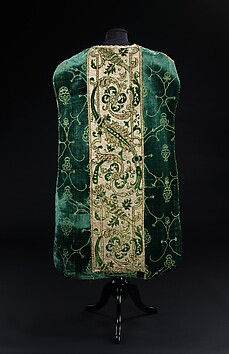
Italian
ca. 1500 (green velvet), ca. 1680 (central velvet), cut patched and reshaped ca. 1900
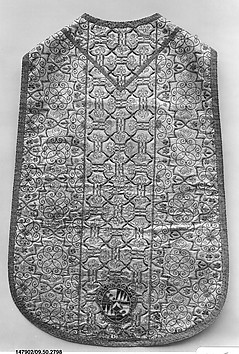
Spanish or Italian
1610
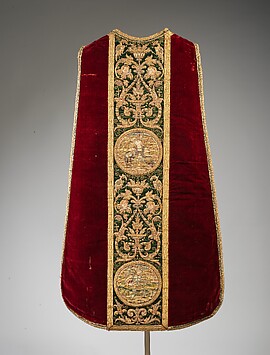
Italian or Spanish
ca. 1550 (embroideries), 1850 (velvet), cut, patched and reassembled at a later date
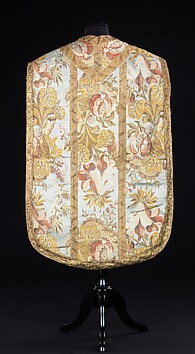
Italian
Late 19th century
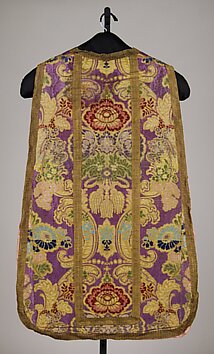
probably Italian
ca. 1875
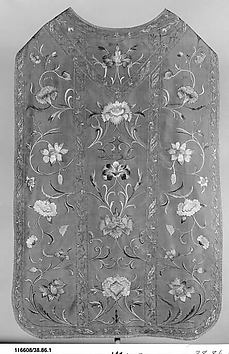
Chinese, for European market
ca. 1890